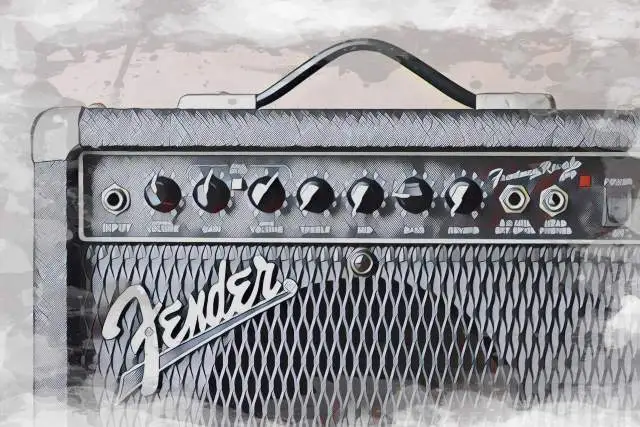Gone are the days of lugging around heavy amps, stacks, and pedalboards from gig to gig. What was once a badge of honor in the rock and roll world, the sheer physicality of hauling gear, has become an unnecessary hassle in today’s world.
More and more musicians, whether touring professionals or weekend warriors, are swapping out their traditional setups for amp modelers. This isn't just a trend either, it’s a shift in how we think about live sound.
Bands like Metallica and Riverside have already embraced the power of modeling technology, moving away from the cumbersome weight of analog gear in favor of lighter, more versatile solutions that still get the job done. Even many studio engineers and producers have been leaning on modelers for their precision and flexibility for years.
If you’re wondering whether this change is just a passing phase, the answer is clear: the future of gear is digital.
In this article, we’ll dive into the best amp modelers of 2025, examining what makes them great options for musicians looking to take their sound further!
What is an Amp Modeler?
At its core, an amp modeler is a digital device designed to replicate the sound and behavior of a real guitar amplifier. Instead of relying on the physical components of an amp (tubes, speakers, transformers, etc.), an amp modeler uses advanced digital algorithms to simulate how an amp behaves under different conditions.
Essentially, it takes the iconic tones and nuances of your favorite amps and reproduces them through software, so you can have all the tone you need without the weight or cost of traditional gear.
The journey into amp modeling began back in the early 1980s with the Rockman X100 , a pioneering piece of technology that laid the foundation for everything that followed. The X100 was the first serious attempt at capturing amp tones in a compact, digital format - and it wasn’t just a novelty. It featured on some of the most iconic records of the '80s, including works by Boston and Joe Satriani , offering a clean, powerful distortion that could be easily dialed in at home or on the road. While the Rockman was a game-changer, the true digital revolution was still a few years off.
The real shift came with Roland and Line 6 in the '90s, two brands that would forever change digital modeling. Roland’s VG-8 amps and the first Line 6 POD made modeling not only more accessible but a viable alternative for serious musicians. The Line 6 POD , in particular, introduced a more user-friendly, affordable, and portable way to get legendary tones, with multiple amp models, effects, and recording capabilities all packed into one box.
When it hit the market in 1998, it was a revelation - affordable digital amp modeling for everyone. Still, despite the convenience and innovation, it was clear there was a noticeable gap in quality between these modelers and the real thing.
Even though the POD could get close, it wasn’t quite the same as plugging into a classic tube amp. But as the technology evolved, so did the quality. Kemper’s Profiling Amp , which was released in 2011, really changed the game. What made the Kemper different was its ability to “profile” real amps, essentially capturing a precise snapshot of the amp’s sound and behavior, including all the subtleties, quirks, and dynamic responses that the software-driven modelers couldn’t quite capture.
It was a digital representation of an actual amp, down to the way it interacted with the guitar and environment.
Now, when it comes to amp modelers versus profilers, there’s often a bit of a divide. Purists may argue that modelers and profilers are two different beasts. A modeler, in their eyes, is like a painting of a landscape - an approximation of the real thing, a stylized version. A profiler, on the other hand, is more like a photograph, capturing the precise details of the subject without any embellishment.
While both tools aim to deliver great tones, profiling allows for a much more “authentic” experience, particularly when it comes to faithfully recreating the feel of the original amp. But at the end of the day, whether it’s a modeler or a profiler, the goal is the same: to give musicians a tool that lets them create, explore, and shape their guitar sound without the limitations of traditional gear.
Our 12 Favorite Amp Modelers
1. Neural DSP Quad Cortex
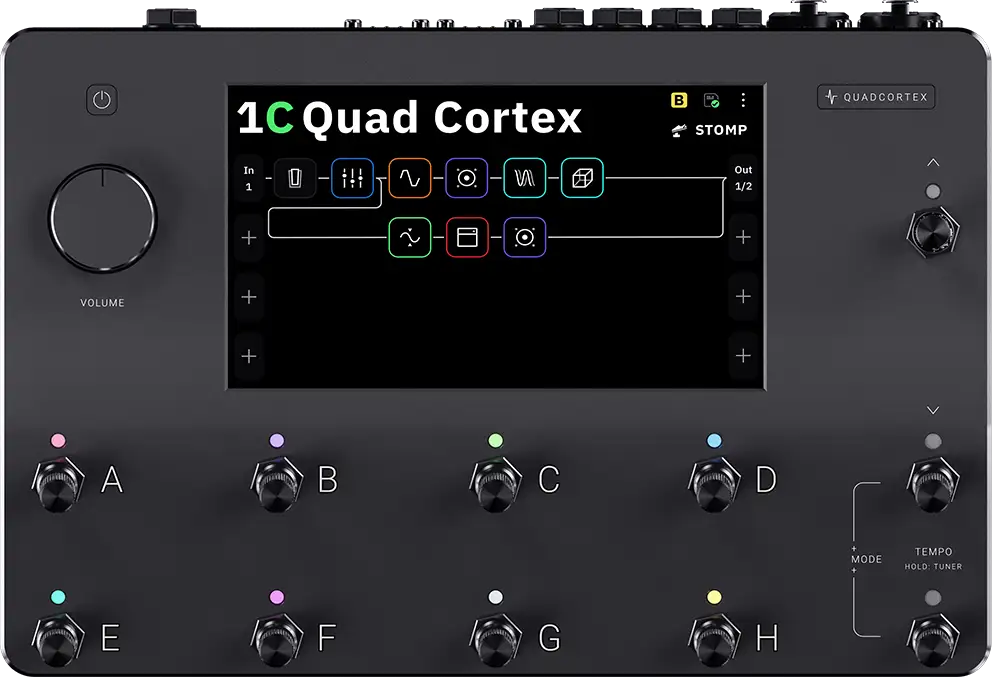
Though it was released in 2020, the Neural DSP Quad Cortex is still cemented as the go-to amp modeler for musicians who demand the absolute best in terms of sound quality, versatility, and performance.
Even a few years after its launch, it’s still the top choice for countless professional musicians who’ve swapped out their high-end tube amps in favor of it. The Quad Cortex has become the ultimate digital solution, offering a lightweight, all-in-one system that doesn’t compromise on tone or functionality.
What truly sets the Quad Cortex apart is its SHARC quad-core processor , a beast of a chip that ensures lightning-fast processing and zero-latency performance . This means when you're playing, it feels like you're interacting with a real amplifier, without the slightest hint of delay, no matter how complex the patch or how intricate the playing.
It also has an incredibly intuitive interface . The touch screen is sleek and easy to use, and I love the fact that you don't have to squint at a tiny screen or deal with clunky menus. And whether you’re into metal, jazz, blues, or ambient, the Quad Cortex is more than capable of handling it all. It’s flexible enough to adapt to virtually any genre, making it an incredibly attractive choice for musicians who play across different styles.
The Quad Cortex also makes managing complex signal chains a breeze. You can set up intricate routing, layer effects, and stack amp models with ease, all while keeping things organized and under control.
However, one of the biggest benefits of using the Quad Cortex is its community base. With a huge, passionate base of musicians and sound designers, you can always find new amp profiles, unique effects, or tips and tricks to get the most out of your unit.
2. Fractal Axe-FX III Mark II Turbo

If you’ve spent any time exploring amp modelers, then you’ve almost certainly come across the Axe-Fx III Mark II . With its impeccable sound quality and unparalleled depth of control, the Mark II is a true amp modeler that rivals even the finest tube amps.
While the rack-mount version of the Axe-Fx III Mark II is especially popular among touring musicians and studio engineers, it’s also earned the trust of some of the biggest names in guitar.
Players like John Petrucci (Dream Theater) , Steve Vai , and Periphery’s Misha Mansoor have all embraced the Axe-Fx in their setups. It’s no surprise, given the fact that you can dial in just about any sound with incredible detail and responsiveness.
One of my personal favorite things about the Axe-Fx III Mark II is how well it integrates with other gear, particularly with MIDI control . Whether you want to tweak effects or switch between preset sounds mid-song, the Axe-Fx makes it all easy.
And then there’s the Axe-Fx III Turbo version, which offers a 25% clock speed boost for faster processing and even more responsiveness. What does that mean for you as a player? Essentially, it translates into ultra-low latency performance, and the ability to handle more complex chains without any compromise.
If you already have a pedalboard and don't fully want to commit to digital, you’ll be pleased to know that the Axe-Fx III can integrate seamlessly into your existing rig.
3. Kemper Profiler Stage
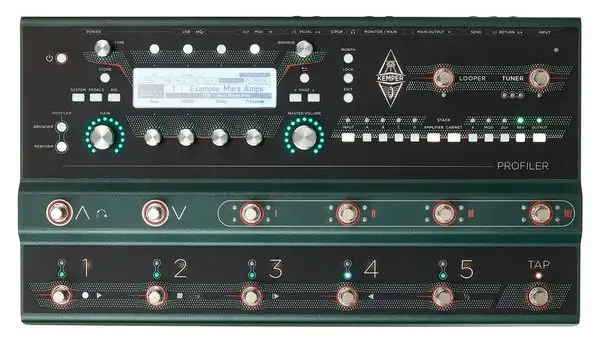
The Kemper Profiler has stood the test of time. While some of the hardware feels a little long in the tooth, especially when you compare it to the sleek, cutting-edge interfaces of some newer models, the heart of Kemper remains unchanged, and that’s where it counts: its tone.
When it comes to capturing the essence of your favorite amps, the Kemper Profiler is still one of the best there is.
What sets the Kemper apart, even after all these years, is that it "digitally clones" any amp you can think of. Whether you’re after the vintage warmth of a 60s Fender Twin or the brutal heaviness of a high-gain Mesa, the Kemper can take a snapshot of your amp, capturing all the little quirks and nuances, and deliver it with impressive accuracy. You basically get the sound of a full amp rack and cabinet in a single device, without compromising on that all-important dynamic response that makes a real amp feel alive.
That said, while the Kemper Profiler Stage it still one of the best-sounding rigs out there, there’s a bit of a learning curve to the setup process. It’s not as instantly user-friendly as some of its rivals. Getting everything dialed in and ready to go can take a little more time and effort. But once you’ve got it set up, the Profiler Stage feels far more intuitive when you’re on stage or in the studio.
For those who need something that can take the bumps and bruises of life on tour, the Kemper Profiler ’s build quality is legendary. It's designed to withstand the rigors of touring, whether it's being shoved into the back of a van or exposed to the constant hustle of live gigs. The Profiler Stage , in particular, is sleek, streamlined, and ideal for guitarists who want a compact, roadworthy solution.
Overall, while it may have lost a bit of ground on its competitors in terms of ease of use and hardware design, the Kemper Profiler is still a go-to for anyone serious about getting the most authentic, detailed, and versatile amp tones from a modeler.
4. Headrush Core
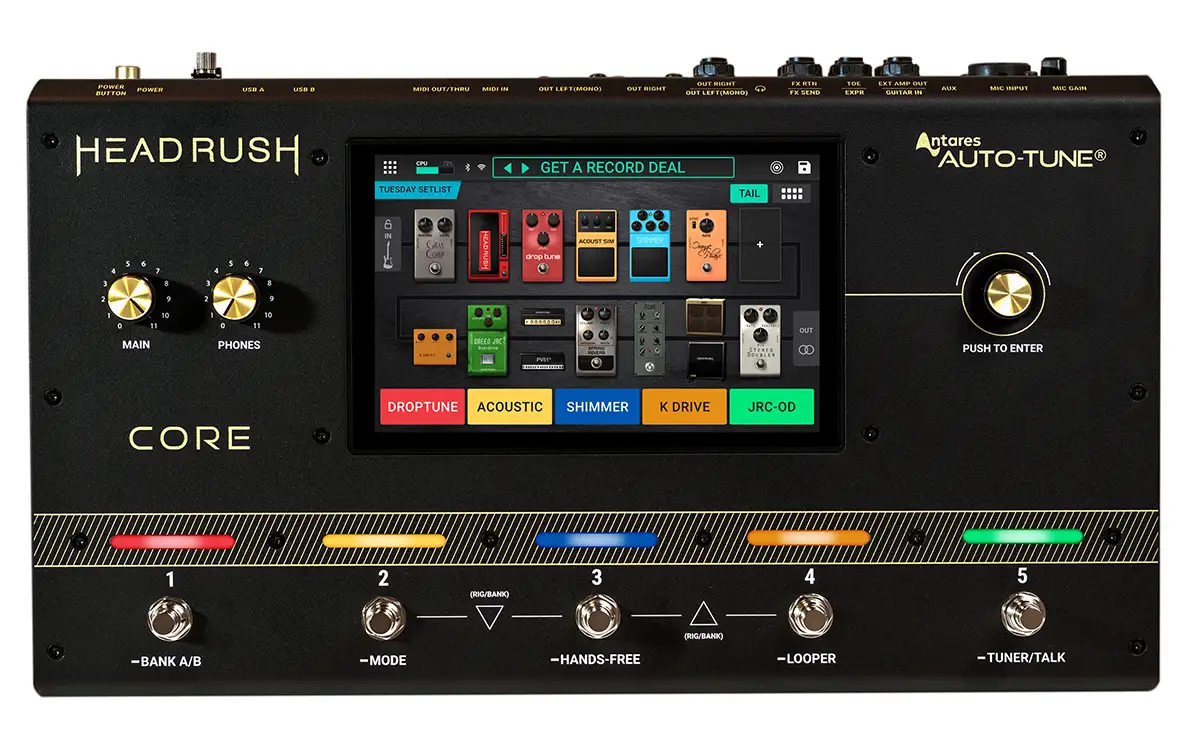
If you're looking for a compact amp modeler that offers both great tones and vocal processing, Headrush's Core is the one. Perfect for playing live, this little thing packs an impressive amount of power into a portable package.
Antares Autotune is also built-in for stellar vocal processing , making it great for performers who want more than just guitar tones. This is a huge win for solo artists!
Thanks to the easy-to-use touch screen interface, manipulating both guitar and vocal settings is easier than ever. The design is simple yet highly functional, so you won’t waste time scrolling through complex menus or struggling with small buttons, which is a big plus for live gigs.
However, this is a "best amp modeler" article, so let's talk about how the Headrush Core also packs a serious punch with guitar tones. One of its key features is its amp cloning technology , which allows you to replicate your favorite amps and capture that authentic tone in digital form.
Now, while you might think you need to splurge on the Headrush's Prime model, which is its larger sibling that offers a few extra features, the Core delivers almost everything the Prime does, at a much lower weight and price.
For many, that’s a major advantage, especially if you’re someone who values portability or regularly travels for gigs. It uses an identical digital signal processor and software , so you’re not sacrificing performance to save a little weight. In fact, the Core is our preferred pick, because it gives you all the essentials, with zero compromise on quality, in a sleek, compact design that won’t slow you down.
5. Line 6 Helix LT
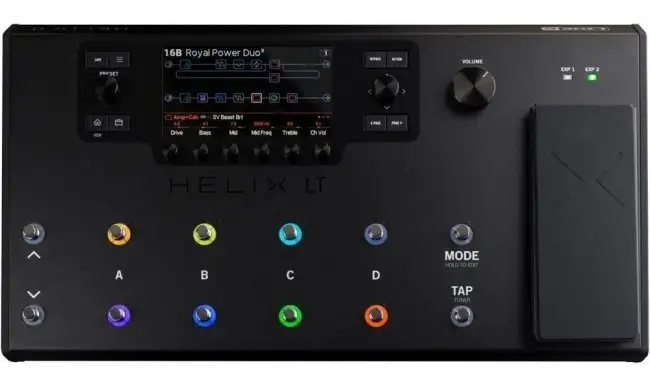
When Line 6 first ventured into modeling, the company was met with skepticism. Back then, the idea that digital modelers could replace traditional tube amps seemed almost laughable. Fast forward to today, and with the massive success of their Helix range, it’s clear who had the last laugh. The Helix LT is the latest chapter in this journey, which is basically a stripped-back version of their flagship floorboard modeler.
At its core, the Helix LT offers much of the same great performance as its bigger sibling, but at a much friendlier price point . If you want a professional-grade modeler but don’t have the budget for the full-featured Helix, the LT hits the sweet spot at just under $1,000.
Compared to the likes of Neural DSP’s Quad Cortex or Fender’s Tone Master (which we'll get into in a bit), the Helix LT holds its own. However, there are a few areas where it falls short.
The amp models, while excellent, don’t have the same level of refinement you’d find in some higher-end models. There’s also a bit of a clunkier feel in the overall interface. That being said, Line 6 has done an admirable job of supporting the Helix range with regular software and firmware updates , continually improving the tones and features.
6. Hotone Ampero II Stomp
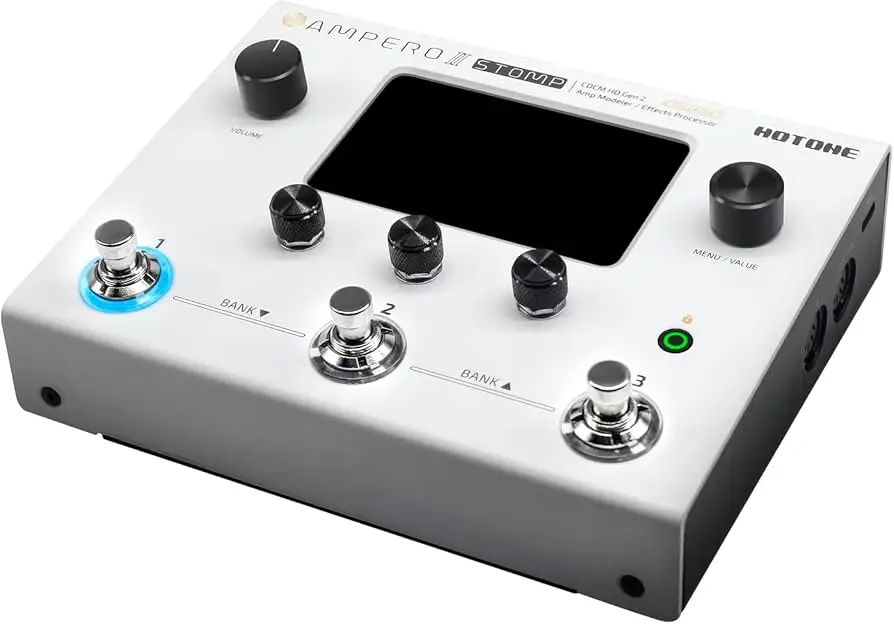
If you're looking for an affordable yet powerful modeler that doesn’t skimp on tone, the Hotone Ampero II Stomp is a serious contender. With its Field Impulse Response Enhancement (F.I.R.E.) and Advanced CDCM HD tech, this compact unit uses advanced dynamic modeling to recreate the essence of classic amps.
Even though this all might just sound like a mouthful of acronyms, the Ampero II walks the walk. The amp models feel organic, responsive, and natural, which is a refreshing surprise given the price point.
One of the major upgrades with the Ampero II Stomp is the added processing power it brings to the table. Hotone dialed up the analog-to-digital conversion and the overall processing from the original Ampero lineup. So, while it may be compact, it punches well above its weight.
That said, the Ampero II Stomp is a bit of a trade-off in terms of features. One downside is the loss of the footswitch and expression pedal from the original Ampero.
With that said, you can go external with another expression pedal if that’s a deal-breaker for you. So, while it’s not quite as feature-packed as the original, it’s still a solid option that doesn’t sacrifice tone or usability.
Even though the four-inch touchscreen is a bit smaller than what you might find on higher-end models, it’s bright and clear, perfect for less-than-ideal lighting conditions. As for the chassis, it’s durable and looks great too, and definitely more polished than you’d expect at this price.
7. Universal Audio Lion ‘68 Super Lead
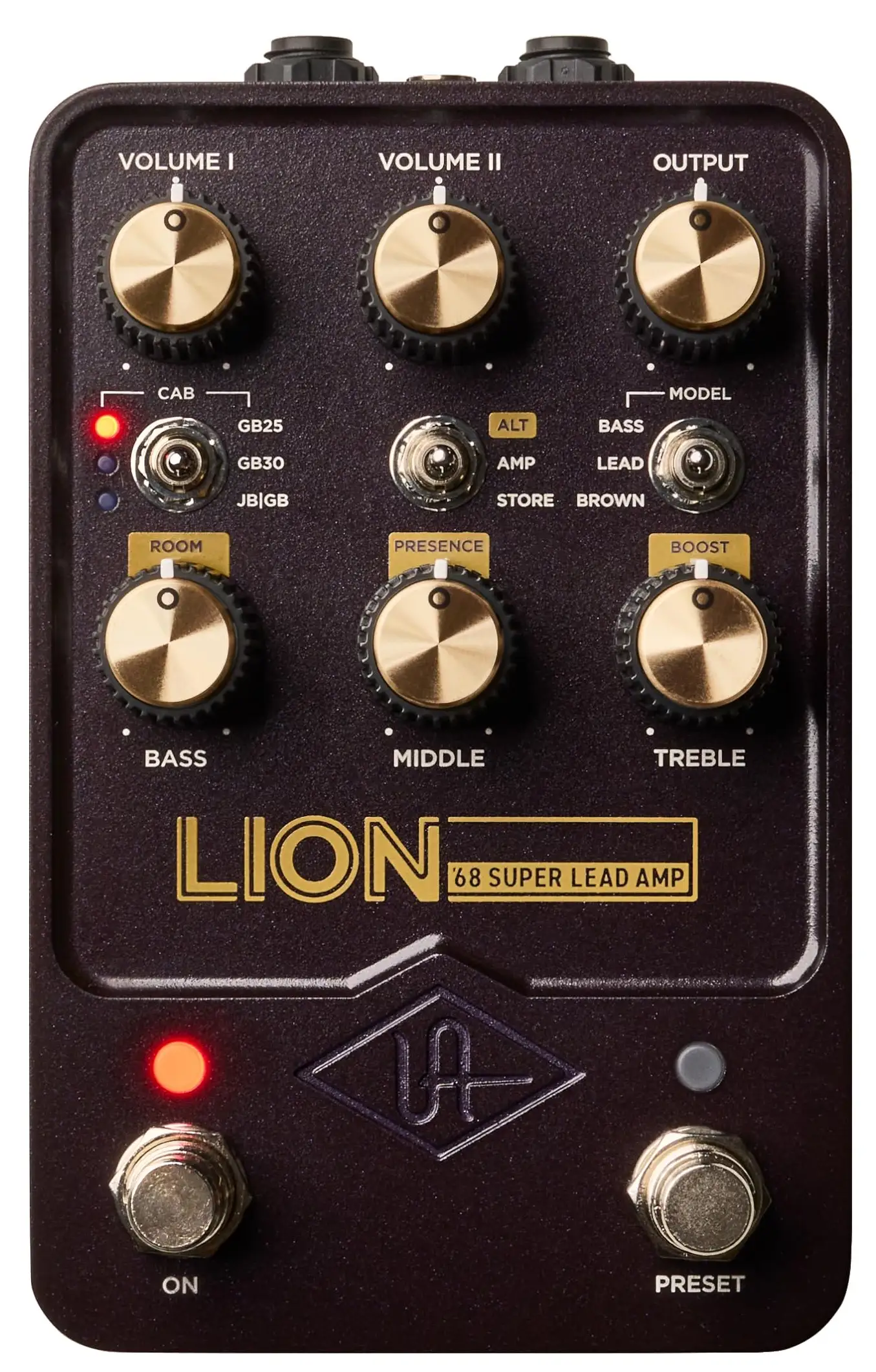
For many guitarists, having a wide range of amp models at your fingertips is a huge draw, but there’s a growing group of players who just want the one . If you crave the raw power and punch of a classic Marshall Plexi but don’t want the hassle of lugging around an actual stack, then the Universal Audio Lion ‘68 Super Lead might be the best amp modeler for you.
Unlike the all-you-can-eat buffet of amp modelers, the Super Lead is laser-focused . It’s a Marshall-centric pedal that delivers exactly what you expect from the iconic 100W Plexi . Marshall-style models are notoriously hard to get right. They’re finicky, aggressive, and legendary for a reason. But Universal Audio has somehow managed to capture that Plexi magic , delivering all the power, grind, and clarity you'd expect, without the need for cranking the volume up to 11. The Lion lets you experience that feeling, no matter your volume.
You get an integrated boost and a reverb for added space. If you’re into artist presets, you can explore UA's software to find larger reverb options. Overall, it’s a simple, yet versatile setup, perfect for players who want a plug-and-play experience that’s just right .
8. IK Multimedia Tonex Pedal
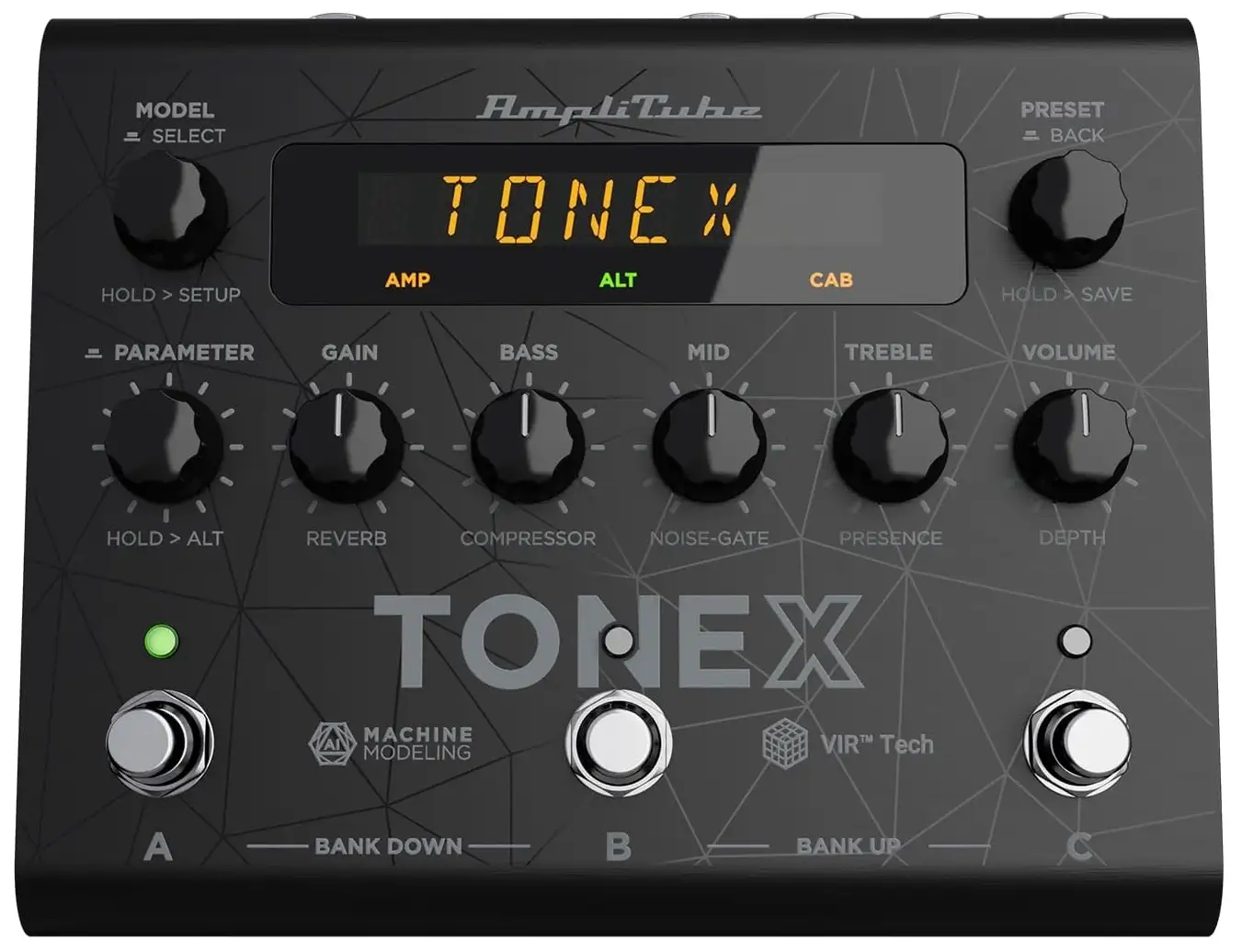
IK Multimedia has long been a leader in software-based modeling with their Amplitube suite, and now they’ve brought their vast expertise to the Tonex Pedal .
At its core, the Tonex Pedal acts as a hardware interface for IK Multimedia’s Tonex software , allowing you to tap into their extensive library of modeled and profiled amps . You get access to IK’s vast archive of iconic amps, pedal profiles , and more, right at your feet.
However, while the Tonex Pedal is excellent when paired with its software (and a USB connection), it’s not the most intuitive or user-friendly interface for someone looking for plug-and-play convenience . Unlike some other modelers that offer immediate ease of use, the Tonex’s interface could leave you fumbling for the right settings.
In terms of pure amp modeling , however, the Tonex Pedal is hard to top in its price range. If your primary focus is creating a wide variety of authentic amp tones and you don’t mind using the software to unlock the full library, this pedal is an incredible value.
9. Fender Tone Master Pro
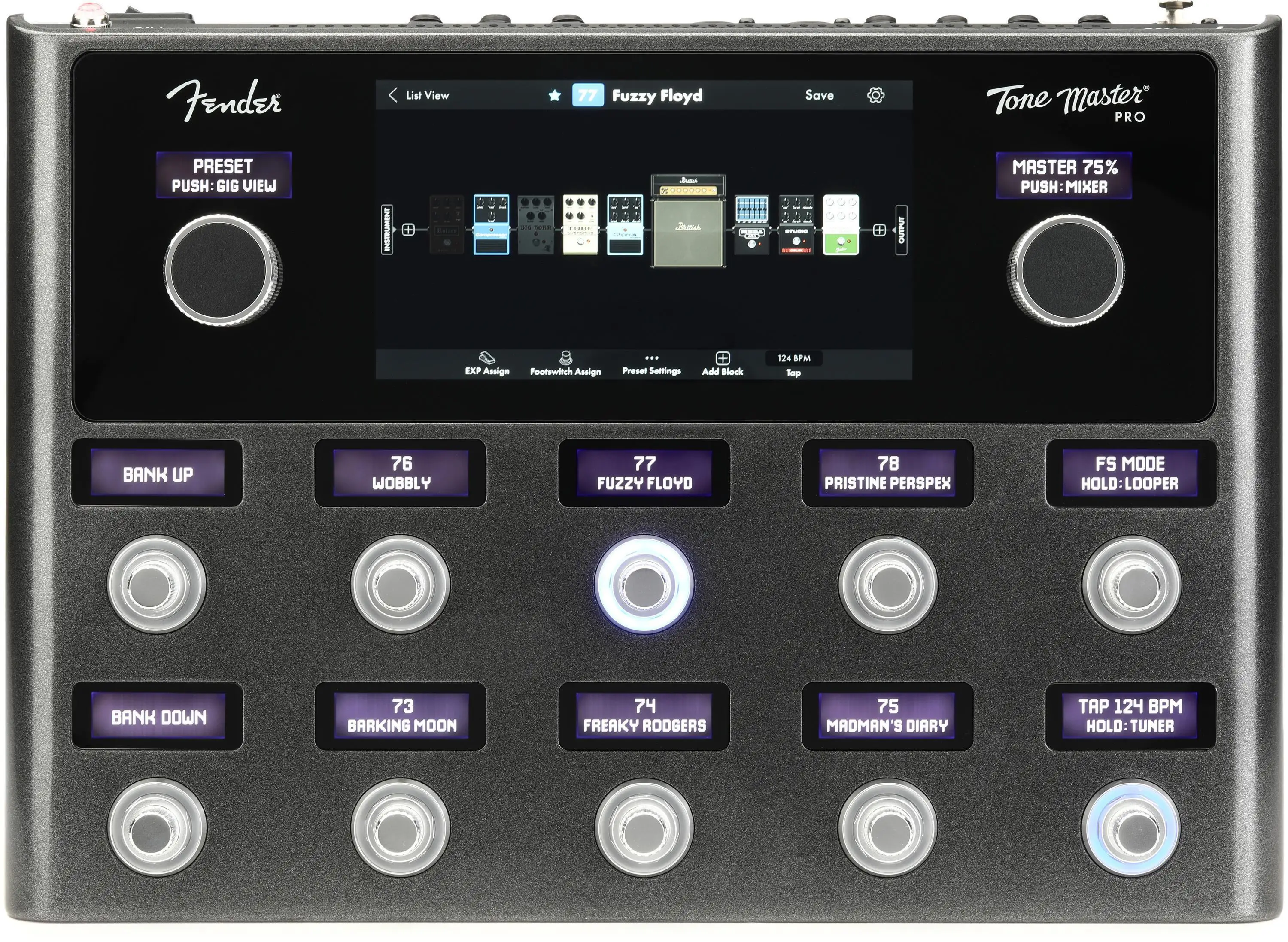
Fender has a reputation for building some of the most iconic amps in history, so it's no surprise that the company decided to dip its toes into the amp modeling world with the Tone Master Pro . This floorboard unit takes a different approach than some of its competitors, opting for full-scale modeling rather than relying on capturing specific amps through profiling. And while it might not dethrone every other modeler out there, if you're a Fender aficionado , this is a tool you’ll definitely want in your arsenal.
The Tone Master Pro delivers stellar renditions of iconic Fender amps, from the sparkly clean ’65 Twin Reverb to the punchy ’68 Bassman .
Beyond modeling, it also has an impressive effects suite , offering everything from the classic spring reverb (a staple of Fender’s sound) to spacious, atmospheric hall reverbs that will make you feel like you’re playing in a cathedral. The Tone Master Pro also includes four effects loops to add your own favorite pedals into the mix.
The user interface on this amp modeler has a 7” touchscreen that's bright, clear, and intuitive, while the scribble strips make it easy to keep track of presets and settings. When you switch into stompbox mode , you basically have a real pedalboard right in front of you, so the whole experience feels very familiar.
10. Boss GT-1000 Core
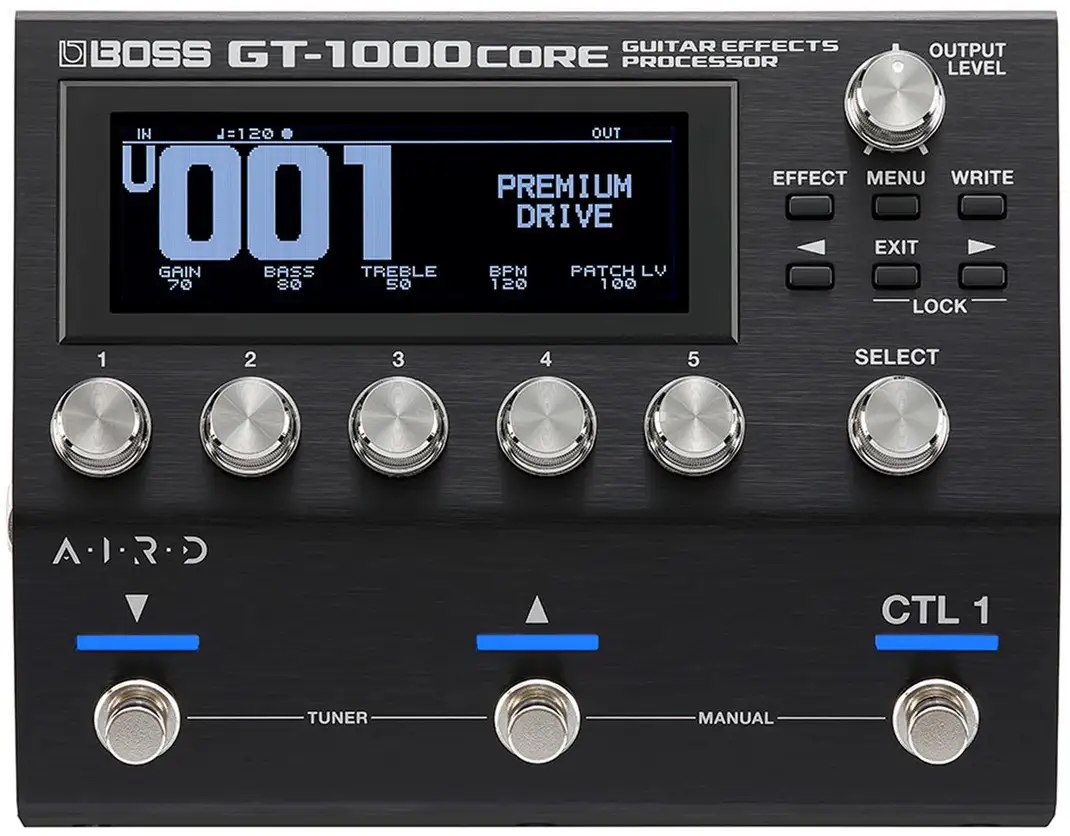
The Boss GT-1000 Core might be small, but don’t let its compact form fool you. You get a portable package with all of the same processing power that’s earned the GT series a loyal following. With 96kHz audio quality, it's a solid option for both studio and live setups .
It offers 24 effects and the ability to set up a dual-amplifier configuration for complex stereo rigs .
The GT-1000 Core's features are surprisingly generous for its small design. You get a stereo input and output , MIDI in and out, and dual effects sends and returns . If you want to integrate this unit into a bigger setup, this is a big win.
On the flip side, the interface isn’t quite as easy to use as some of its competitors. That said, the GT-1000 Core makes up for these minor drawbacks with its robust effects engine .
11. Atomic Amplifire
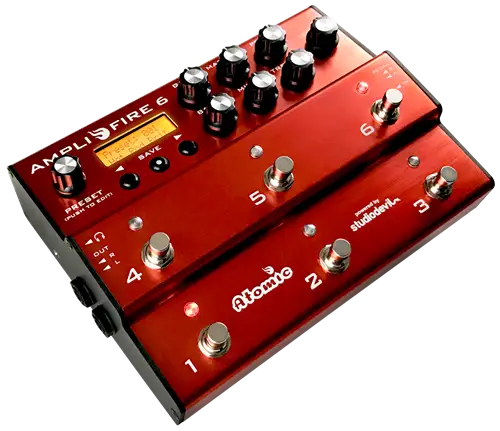
Atomic has been leading the charge in the compact amp modeling space with its Amplifire series. These little units combine the amp-in-a-box solution with all the convenience of a multi-FX unit. The aim here is to give musicians an intuitive, accessible platform for incredible tones, with easy-to-use preamp controls , a tactile interface , and built-in effects .
Unlike many traditional multi-FX units, the Amplifire series focuses on providing complete modeling with high-quality effects , all within a compact, pedalboard-friendly format.
It's one of the simplest and most accessible modelling amps on this list. Even with its compact size, it’s got a 12-switch setup , which gives you a lot of control without ever feeling confusing.
In terms of connectivity , the Amplifire has simple, gig-friendly I/O options that make it easy to integrate into your setup. And with its built-in effects, you won’t need to drag along a separate pedalboard to get the amp sounds you want.
12. NUX MG-400
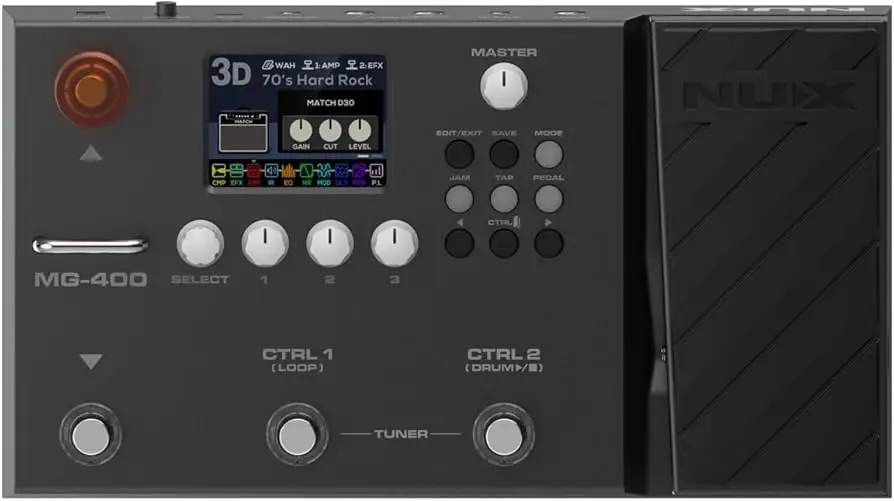
The words "budget" and "amp modeling" aren't often heard in the same sentence. However, the MG-400 shatters that old stereotype, offering a multi-effects engine with ultra-high-end modelling amps for its price point.
While the MG-400 doesn’t have a massive catalog of amplifier models (there are only 25 in total) each one has a quality sound. Each amp model is carefully designed and offers usable, reliable tones that make it easy to dial in sounds you actually want to play. There are also eight modeled bass amps and an integrated drum machine for songwriting.
What really makes the MG-400 stand out from other digital amp modelers is its built-in looper and USB interface, which make it easy to record and connect to your DAW for home recording.
Despite the fact that it's a "budget product" from a brand that might not have the same cachet as some bigger names, the MG-400 is a surprisingly exciting tool that any level of guitarist can appreciate.
Do Modelers Sound as Good as Real Amps?
The gap between modelling amps and real, analog amps has narrowed over the past decade. Many high-end amp modelers sound indistinguishable from their tube amp counterparts . The sound quality you can achieve with the latest modelers holds up incredibly well.
That said, there's still a debate over whether modelers can truly replicate the essence of a classic tube amp. Some argue there’s an intangible quality to the real thing, whether it’s the interaction between the speaker and amp, the natural response to your playing dynamics, or simply the emotional connection that comes with owning and playing a legendary amp. No matter how advanced modeling gets, some players will always swear by the unmatched "soul" of an analog tube amp.
"Feel" is often where things get tricky. While the sound may be spot-on, modelers still struggle to replicate the tactile response of a real amp. When you play through a tube amplifier, there’s an immediate, organic reaction that comes from the analog signal chain. However, with digital amp profiling, your signal needs to go through a number of steps.
First, it’s converted from analog to digital then processed by the modeler, before converting back to analog, and eventually output through your listening device. This process takes time , even if it’s just fractions of a second.
This delay, called latency , is something that digital modelers have to contend with. For the casual listener, or even most players, this delay is barely perceptible. However, for seasoned players , especially those who’ve spent years with tube amps, the feel can be a little off. The response might not be as immediate or as dynamic as what you’re used to with a real amp.
Luckily, with the latest amp modelers, advancements in processing power mean that latency isn't as big of an issue as it used to be, making the digital-to-analog conversion process feel almost instantaneous.
Is An Amp Modeler Worth Buying?
If you’ve ever wished you could try out a variety of guitar amps or experiment with different types of speakers without having to switch between effects or buy a truckload of gear, then the answer is likely a resounding yes .
Modelling amps give players access to multiple amps and tones in single, easy-to-use units.
Where a traditional amp might be limited to a handful of controls, modelling amps offer an array of advanced features like MIDI , which you can use to map your setlist to control your rig as you play.
For gigging musicians , having all of your amp sounds and effects triggered in real-time is a huge life-saver.
Of course, if you’re someone who thrives on the raw, unprocessed power of a real tube amp , you might not be ready to jump on the amp modeler bandwagon just yet, and that's okay. Even so, I'd encourage you to get out there and explore the best amp modelers for yourself!


